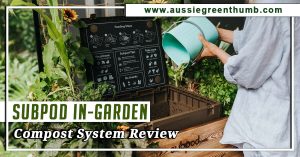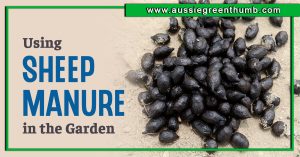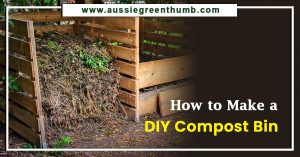Have you always wanted to try bokashi composting but never knew where to begin? If so, then you are in the right place. This comprehensive guide will teach you all there is to know about the composting benefits of bokashi and help you get started with this composting technique.
More...
Introduction to Bokashi Composting
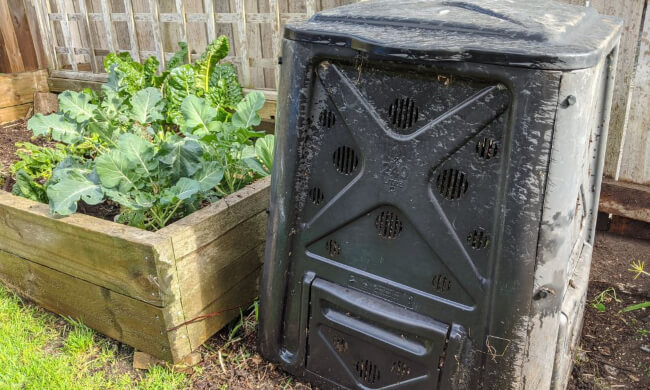
Every gardener knows the importance of composting. It's the natural process of recycling organic materials, such as food scraps and leaves, into a valuable fertiliser that can boost plant growth. And bokashi composting is no different.
Bokashi was invented by Japanese biologist Teuro Higa in 1980. This composting technique involves layering food scraps and Bokashi bran in a specially designed bucket. The bokashi bran contains billions of effective microorganisms that, when added to food waste, get to work fermenting food into a pre-compost state.
You can practise bokashi composting by purchasing a ready-to-use bokashi bin or making your own system. This air-tight system uses the anaerobic process of fermentation, where moisture and oxygen are kept to a minimum. This leads to faster food breakdown through "pickling" rather than decaying like in other conventional composting methods.
And because the food scraps aren't completely decomposed in Bokashi, the final product is considered a "pre-compost". Nonetheless, once applied to your garden, it boosts the nutrient content of the soil, immensely benefiting the plants.
The Benefits of Bokashi Composting
Bokashi composting comes with plenty of benefits. Here are some of the reasons why we love Bokashi so much.
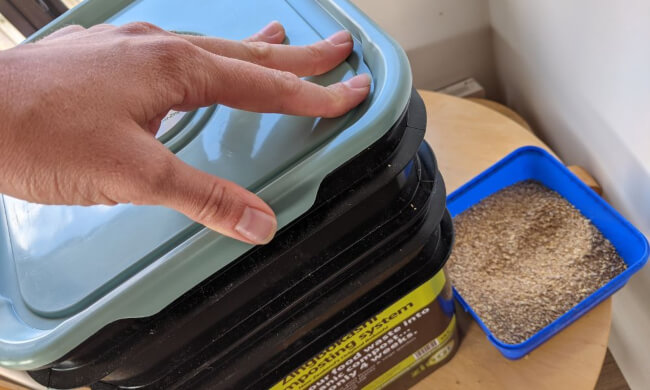
1. Nutrient-Rich Soil: Unlocking Nature’s Goldmine
Just as microbes play a crucial role in our body's health, they’re also essential in maintaining the health of your soil and garden.
Simply put, plants thrive when soil is full of beneficial microorganisms. And because Bokashi compost is teeming with these microbes, it serves as an excellent foundation for building a fertile and productive soil structure.
2. Reducing Food Waste and Environmental Impact
Bokashi composting is not only rewarding for the plants but for the environment as well. For starters, it allows you to compost all types of food waste, including cooked leftovers, bones, meat, cheese, and fruits and vegetable scraps, that otherwise would have gone to landfill.
Moreover, traditional composting releases a lot of greenhouse gas into the atmosphere. In contrast, bokashi works on anaerobic fermentation, where this emission is significantly reduced.
3. Faster Breakdown: A Speedy Route to Rich Compost
Tired of waiting all year long for your food waste to turn into usable compost? This is a common problem with traditional composting methods, as it can take several months to a year to break down entirely.
Bokashi composting, on the other hand, offers a much faster and more effective solution, producing rich fertiliser in just a few weeks. The microorganisms in bokashi bran speed up the breakdown process and get the job done quickly.
By doing Bokashi composting, you can get high-quality compost in as little as two weeks!
4. Produce Nutrient-Rich Fertiliser
Last but not least, another great composting benefit of bokashi is that it produces leachate or ‘bokashi tea’, which is an excellent liquid fertiliser.


Get Your Free Guide:
Master Growing Australian Natives eBook
A Must Have Complete Guide for Every Australian Garden
Get Your Free Guide:
Master Growing Australian Natives eBook
A Must Have Complete Guide for Every Australian Garden
Bokashi tea is full of beneficial microbes and all the bokashi goodness that helps unlock the nutrients and minerals in your soil. However, because the leachate is rather acidic, it's thus very important that you dilute it before use.
The recommended dilution ratio is 1:100 (one part bokashi tea to 100 parts water), but you can adjust as necessary.
Bokashi Composting Step-by-Step Guide
Now that you know all the basics and composting benefits of bokashi vs traditional compost, you’re ready for the next step. With this step-by-step guide, you'll be on your way to producing nutrient-dense compost for your garden in no time.
1. What You’ll Need
- Bokashi Bin: A bokashi bin creates a tight seal that allows effective fermentation. While you can make your bokashi bin at home, it's always better to buy one that's specifically designed for this type of composting. These bins come in various sizes with various features to best suit your needs.
- Bokashi Bran: Next, you'll need bokashi bran: a mix of bran, molasses, and beneficial microbes that acts as a compost accelerator and helps break down the waste. You can purchase this from the same place you purchase your bokashi bin.
- Food Waste: Whether it's fruit, vegetables, meat, egg shells, or cheese, your bokashi bin can compost almost all food waste. The only things to avoid are liquids and rotting foods in order to maintain a dry environment.
2. Add Bokashi Bran & Food Scraps

Start adding food scraps to your bin. You can chop them into smaller pieces to speed up the chemical process. It's a good idea to save up your scraps and only open the bin once a day to minimise exposure to air.
Each time you add food scraps, sprinkle 1-2 tablespoons of bokashi bran over top. Continue doing this until the bucket is completely full. Press the top layer down as flat as possible, and keep the bin tightly sealed at all times.
Remember, this is an oxygen-free process, so keeping out as much air as possible is the goal. Once loaded, keep the bin in a cool, dry spot out of direct sunlight.
3. Collect The Bokashi Tea Regularly
As mentioned earlier, the fermentation process produces a liquid called bokashi tea that can cause a foul odour and hamper the beneficial bacteria if left undrained. Therefore, make sure to drain off the bokashi tea every other day.
This is an incredibly nutrient-rich fertiliser so dilute it and use it to promote your plant's growth.
4. Bury Bokashi
When the bokashi bin is full, it should be sealed and set aside for two weeks for the fermentation process to finish. It's recommended to have two bins, so while your first bin is fermenting, you can restart the process with the second one.
After two weeks, your compost should be ready to be added to your garden. Because the bokashi mixture is slightly acidic, it can burn the roots. Therefore, choose a spot where it does not come in close contact with your plants. Plants can be planted after a few weeks once the soil's pH returns to normal.
Frequently Asked Questions About Bokashi Composting

What happens if you leave bokashi for too long?
The ideal time for fermentation in the bokashi bin is two weeks, but leaving it out for a little longer is perfectly okay. More time won't hurt as long as your bin is safe from extreme temperatures, airtight, and not too wet.
The bokashi microbes will become dormant until the compost is buried.
Is bokashi better than composting?
With a faster, odour-free, and environmentally friendly composting process, bokashi is better than conventional composting methods. Traditional composting still has its place, but bokashi has proven to be a more efficient and straightforward alternative to produce nutritious compost in a shorter amount of time.
Can you put mouldy food in a bokashi bin?
A small amount of mouldy food is okay, but overloading your bokashi bin with lots of rotten/mouldy food can outcompete lactobacillus (bacteria responsible for fermentation) and disturb the composting process.
Also avoid blue, green or black mould as this is detrimental to the fermentation process.

Elle Reed, The Potager Project
Author Bio:
Elle Reed is a passionate gardener and advocate for teaching beginner gardeners how to grow their own food. Elle’s mission is to inspire and empower people to get back to basics, grow their own produce, and embrace a sustainable lifestyle.
“Whether it’s a few herb pots in an apartment, a potager or a full garden plot, we can all ‘start somewhere’ to grow our own food, and in doing so, provide healthier food for ourselves and those we love”.
Reap the Benefits of Bokashi Composting
Bokashi composting is an excellent way to recycle household waste while generating premium-quality compost for your garden. With this easy four-step guide, you can maximise the composting benefits of bokashi and keep your plants happy and healthy for years to come!
Published on August 14, 2023 by Lorri Hopkins
Last Updated on December 11, 2023

